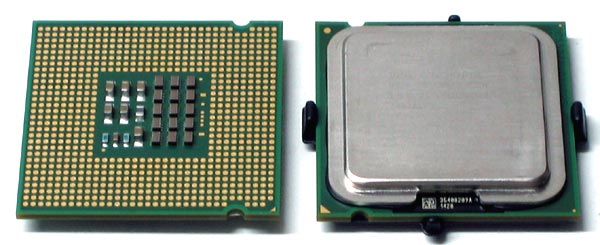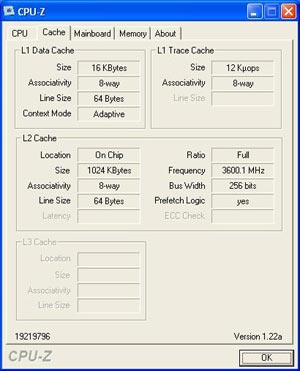Socket T Arrives & Comes With A Plethora Of Goodie
Introduction:
We all knew that Intel had a bunch of new products coming, but by the time all the working parts got there we had little time to get the benchmarking done let alone anything else. We usually have a good 3-4 week advance on a new processor entering the market. This time around we ended up with less than three days thanks to shipping problems, dead/missing parts, and thunderstorms causing power outages. Due to having less than 72 hours to get everything running before the NDA expired we will focus on what is new and jump right into our testing. We skip the fluff and show you the current Prescott CPU’s on the Intel 875P and 925X chipsets. This will allow you to see if this platform is worth upgrading to or not from your current platform.
Today Intel has launched the
LGA775, or Socket
T platform for the masses. Along with the new socket design Intel is also coming out with two new chipsets (alderwood/grantsdale), six new processors, PCI Express for both graphics and sundry peripherals, Intel’s High Definition Audio, the new SATA controller on the all-new ICH6/R southbridge, DDR-II memory, new power supply requirements, and many more small features! As you can tell each of these new areas could have an article/review dedicated to them, but we can’t start to even ponder that due to our time constraints.
The New Processors:

The model numbers for the migrated processors and the new 3.6GHz Prescott are as follows with pricing for
1,000-Unit Quantities are shown below.
- Pentium 4 560 – 3.60GHz
— $637
- Pentium 4 550 – 3.40GHz
— $417
- Pentium 4 540 – 3.20GHz
— $278
- Pentium 4 530 – 3.00GHz
— $218
- Pentium 4 520 – 2.80GHz
— $178
All five chips will use an 800MHz front-side bus, contain
a single megabyte of L2 cache memory with a 256-bit (32-byte) internal bus, 16KB L1 data cache (64-byte cache lines), 12Kop trace cache, SSE3 instruction support,
and use the HyperThreading protocols of the current Pentium 4. A sixth chip, the 3.4GHz Pentium 4 Extreme Edition, will be redesigned for the 775-pin socket and has the same features as a socket 478 EE processor, but this time with a price tag of $999.
Below are some shots of our Intel 560 proscessor running on our test bed.
|
|
|
Intel Reference Cooling for Socket 775:


When the Prescott originally came out as a socket 478 processor, heat was an issue for many right off the bat. We took a look at why the Prescott temperatures were so high back in Feburary and the reasons we found back then are still the case today. This time the Prescott comes with a different heatsink mounting system and therefore it comes with a new heatsink design.
Intel once again teamed up with
Chaun Choung Technology Corp.
(CCI), to help develop a cooling solution to handle the heat and new socket design. They came up with the Intel Radial Curved Bifurcated Fin Heatsink (or RCBFH-3 Reference Design) that is shown above.
Although the heatsink looks a bit cumbersome it is actually very simple to install and remove. To install it align the heatsink mounts to the motherboard holes and push till you hear a click. To remove them you just twist the fastner cap a quarter turn and pull up on the cap. Once you have done this on all four mounts you just remove the heatsink. It is really that simple!

With the system at idle on the test bench we were recording processor temperatures at 40C and load temps just under 60C with the processor fan speed set manually at high. This allowed the fan to run at 2,500RPM’s, while if you let the BIOS handle cooling it idles at 500RPM and adjusts to the usage of the processor. We will hit more on cooling the prescott later and will also give some watercooling benchmarks as our waterblock kits for the new socket T processors are being delivered today.



Comments are closed.